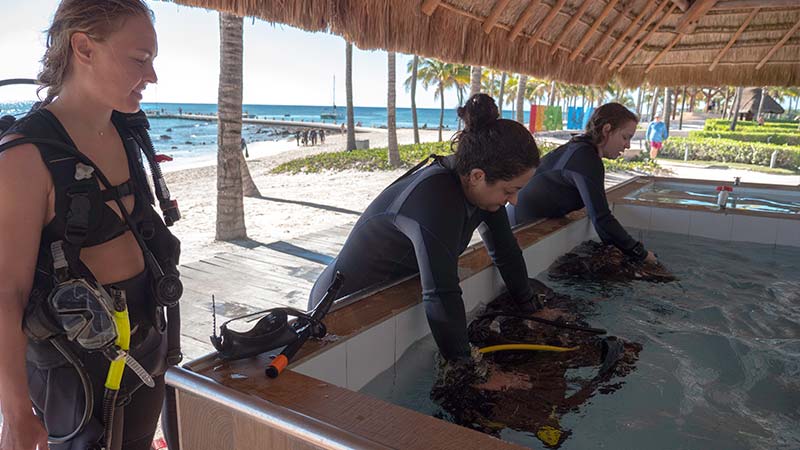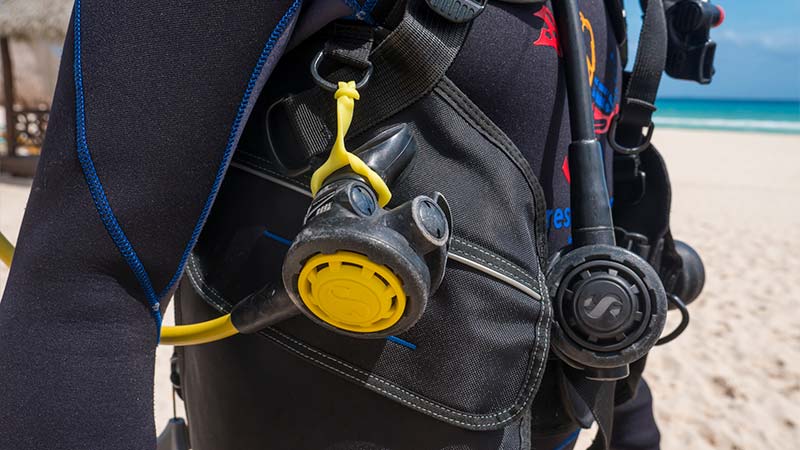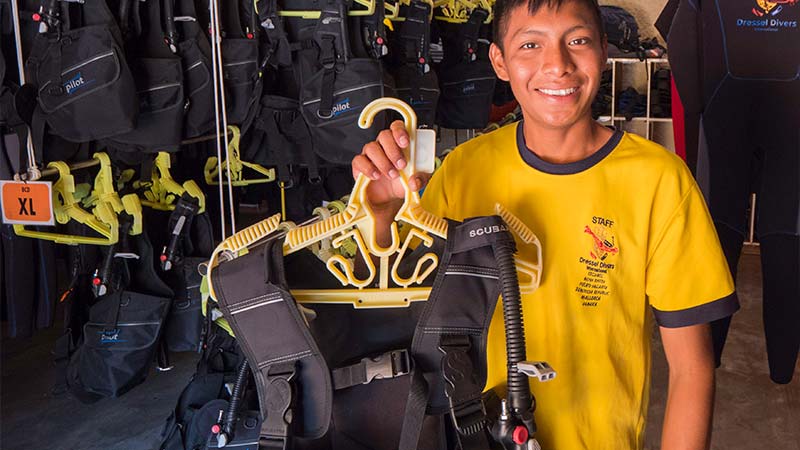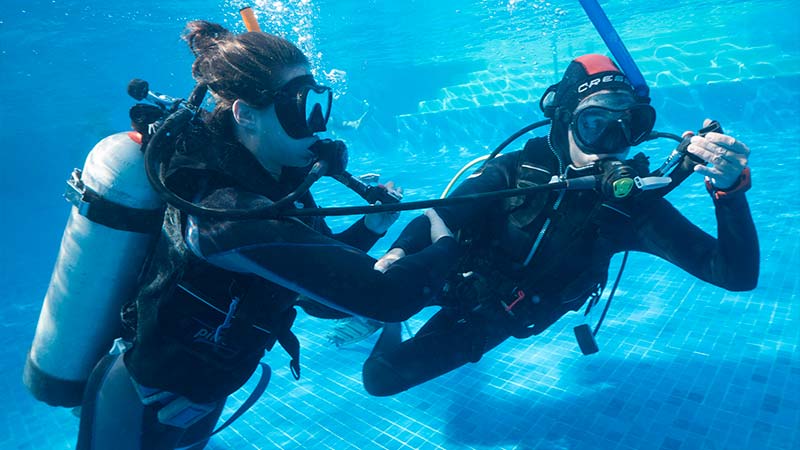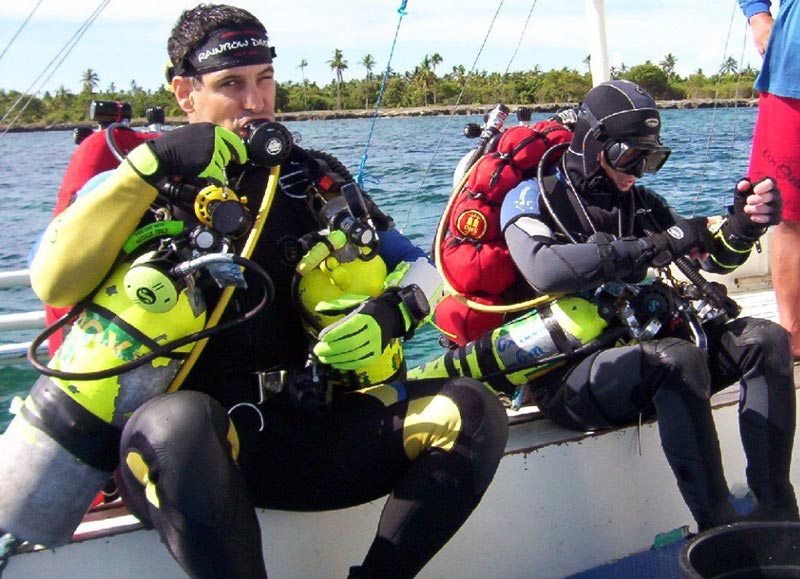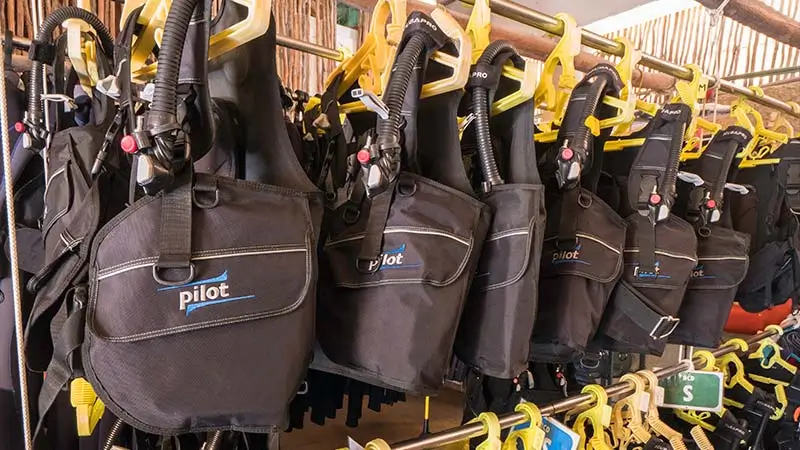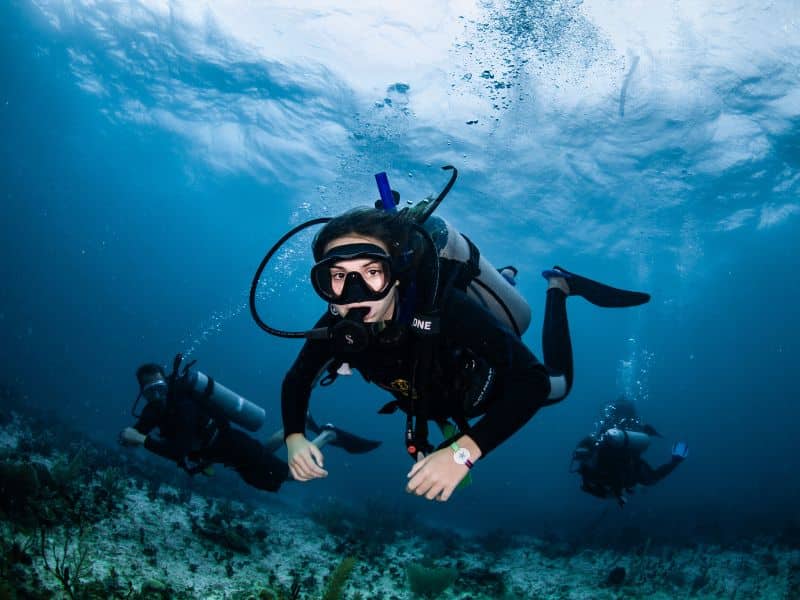8. Scuba Diving BCD Maintenance and Care
Your Scuba Diving BCD is an investment in safety and comfort underwater. But just like any other scuba gear, it needs regular love and maintenance if you want it to last for years and work like a charm.
Here’s your complete guide to keeping your Scuba Diving BCD spotless:
After the Dive: Deep Cleaning
- Outer rinse – Use fresh water and make sure you clean every surface.
- Valves and buttons – Press them while rinsing to get rid of salt and sand.
- Inside the air bladder – Add a little water, swish it gently, then drain completely. Repeat if needed.
- Skip the harsh stuff – No bleach, no alcohol, no abrasive cleaners. Just water or specific BCD cleaning products.
Drying and Storage
- Inflate the Scuba Diving BCD slightly and hang it in a cool, dry place away from direct sunlight.
- Make sure it’s completely dry before storing.
- Remove all weights from the integrated system before putting it away.
- Apply silicone lubricant to rubber parts to extend their life.
💡 Pro Tip: Keeping your Scuba Diving BCD clean and dry not only extends its lifespan, it also ensures it works flawlessly on every dive and keeps your manufacturer’s warranty valid.
Technical Maintenance
- Get an annual professional check, especially if you dive often or in tough conditions.
- Replace worn parts like inflators, valves, buckles, or straps.
- If your Scuba Diving BCD is modular, inspect every component individually.
9. FAQs About Scuba Diving BCDs
What is a Scuba Diving BCD?
It’s a buoyancy control device (BCD) that allows divers to manage their position in the water, go up, descend, and stay afloat on the surface.
What are the most common types of Scuba Diving BCDs?
There are two main styles: the classic “jacket” BCD and the “wing” style BCD.
How do I choose the right size for my Scuba Diving BCD?
The size should fit snugly but comfortably, both when inflated and deflated. It shouldn’t restrict your movements or feel too loose.
How often should I clean my Scuba Diving BCD?
Rinse it with fresh water after every dive. Once a year, give it a deep clean to remove salt and any internal residue.
How do you inflate a Scuba Diving BCD underwater?
You can use the oral inflator, but most divers rely on the power inflator button connected to the scuba tank.
Can I travel on a plane with my Scuba Diving BCD?
Yes! Most BCDs are travel-friendly. You can pack them in checked luggage or even carry-on, depending on airline rules and weight.
What is an integrated weight system in a Scuba Diving BCD?
It’s a pocket or compartment in the BCD designed to hold weights, no need for an old-school weight belt.
What’s the difference between a Scuba Diving BCD and a wing-and-harness setup?
A Scuba Diving BCD is a complete unit with jacket and bladder. A wing-and-harness system is modular, with the harness separated from the inflatable wing.
How do I maintain my Scuba Diving BCD?
Rinse your Scuba Diving BCD with fresh water after every dive. Clean the valves, buttons, and inside the bladder. Let it dry completely before storing. Regularly check straps, clips, and zippers for wear and tear. And if you dive often (or dive technical), an annual professional service is highly recommended.
Choosing the right Scuba Diving BCD can mean the difference between a smooth, fun dive and a frustrating underwater struggle.
So, take the time to pick the best Scuba Diving BCD for you, and take care of it. Your buoyancy, safety, and underwater fun will thank you on every single dive.




